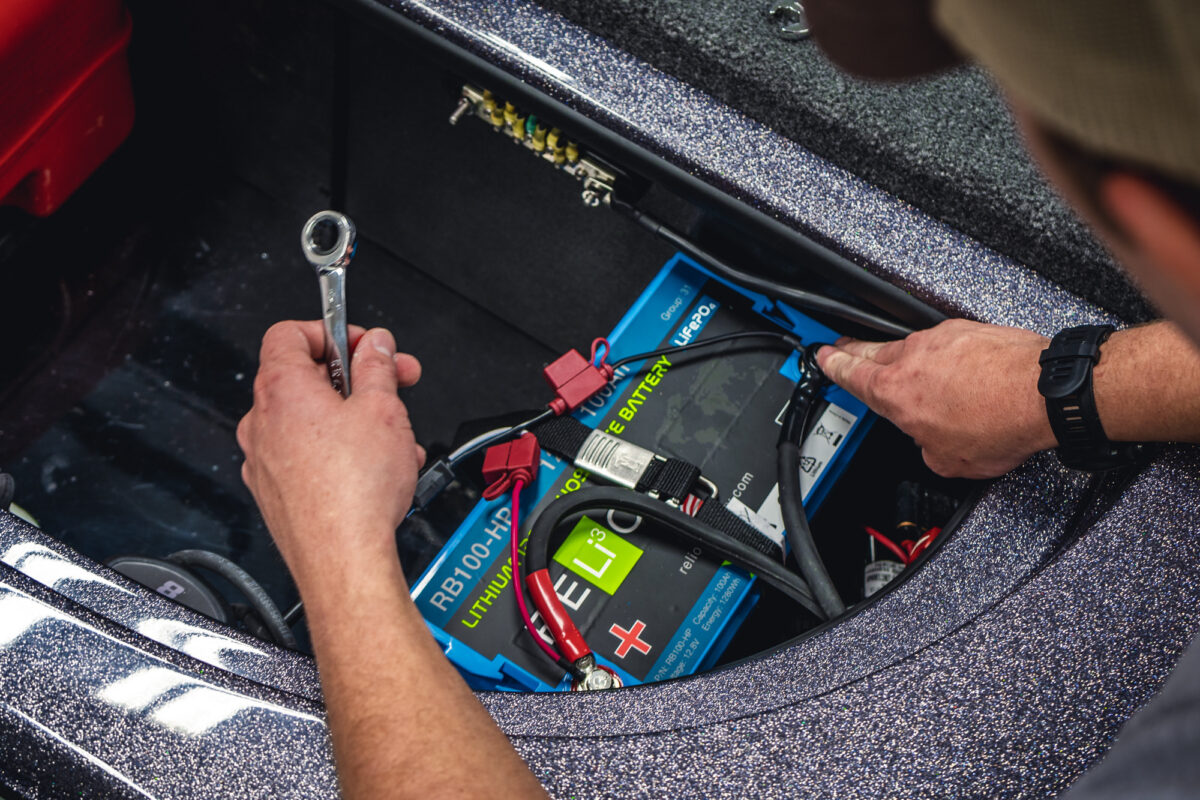Lithium batteries are an effective energy storage device, but they also need to provide enough power for your application, whether you're boating or in an RV. Discover the steps you can take to determine the right battery bank for your application.
Step 1: Take Inventory of What You Need to Power
The first thing to do when sizing your battery bank is take an inventory of everything you need your batteries to power and determine your total energy requirement.
Every electronic device will indicate the electrical load it draws, on its label or on its packaging. This load will be provided either in amps or watts. If it provides amps, estimate – in hours – how long this device will be used each day and multiply it by the current in amps. This will give you the daily amp-hour requirement. If it lists watts, simply divide by the voltage to get the current in amps. Again, estimate - in hours - how long it will be on each day and multiply it by the current in amps. Now you have the amp-hours for each device. Add them all up and you’ll have your daily energy load. This will determine how much battery capacity you need.
Step 2: Determine Your Maximum Power Requirement in Amps or Watts
The second step is to determine the maximum power requirement. This can be done in amps or watts. Since you already determined the amps in the first step, you already have all the information you need. Determine the maximum current needed by adding up all the potential current draws that may take place at the same time. Now you know the current requirements of your battery.
Regardless of what battery you buy, you need to be able to recharge them. If your recharging power source (for example, charger, solar panels etc.) cannot meet your daily demands, you need to reduce your loads or augment your recharging power. Otherwise, your battery bank won’t get fully charged and you will reduce the available capacity for the subsequent discharge.
Let’s say you came up with a daily use of 500Ah.
Looking at RELiON’s 12V batteries, you have options from 5 - 300Ah. If you opt for the 12V, 100Ah RB100, you’ll need five batteries. If you go for the 12V, 300Ah RB300, you’ll need two.

After comparing the two batteries and figuring out the price difference between these options, you might decide to buy two RB300 batteries even though their total capacity will be greater than your needs. Better safe than sorry, good to have some breathing room, right? Not necessarily.
Your battery doesn’t have excess capacity unless your recharging power supply does its job. If your recharge power supply is sufficient to fully recharge your battery bank in the allocated time, then you are paying for capacity you will never use.
This is less of a concern with lithium batteries than with lead-acid batteries, since lithium batteries are not adversely affected by being in a partial state of charge. But an incomplete charging cycle does not give you the most accurate information about how much capacity you have left in your battery. Knowing you have 500Ah in a 500Ah battery bank is a different experience than estimating you have about 500Ah in a 600Ah bank.
Lithium batteries’ high efficiency, usable capacity and ability to not be affected by partial state of charge make it easy to size your battery bank. Once you know what you need, RELiON’s selection of batteries in 12, 24 and 48 volts and a wide range of amp-hours makes it easy to find the right solution for you.
As always, if you are not sure what RELiON battery is best for whatever you have in mind, let us know and we’ll work with you to find the right size bank of the right batteries to keep you powered up. Contact us here.
